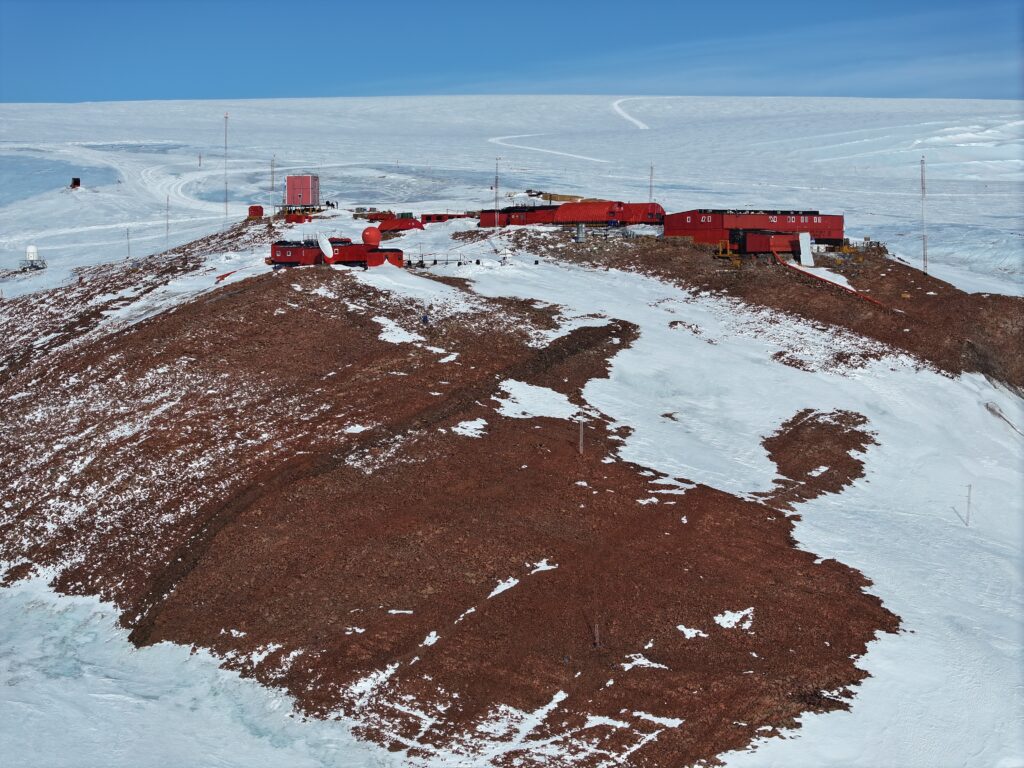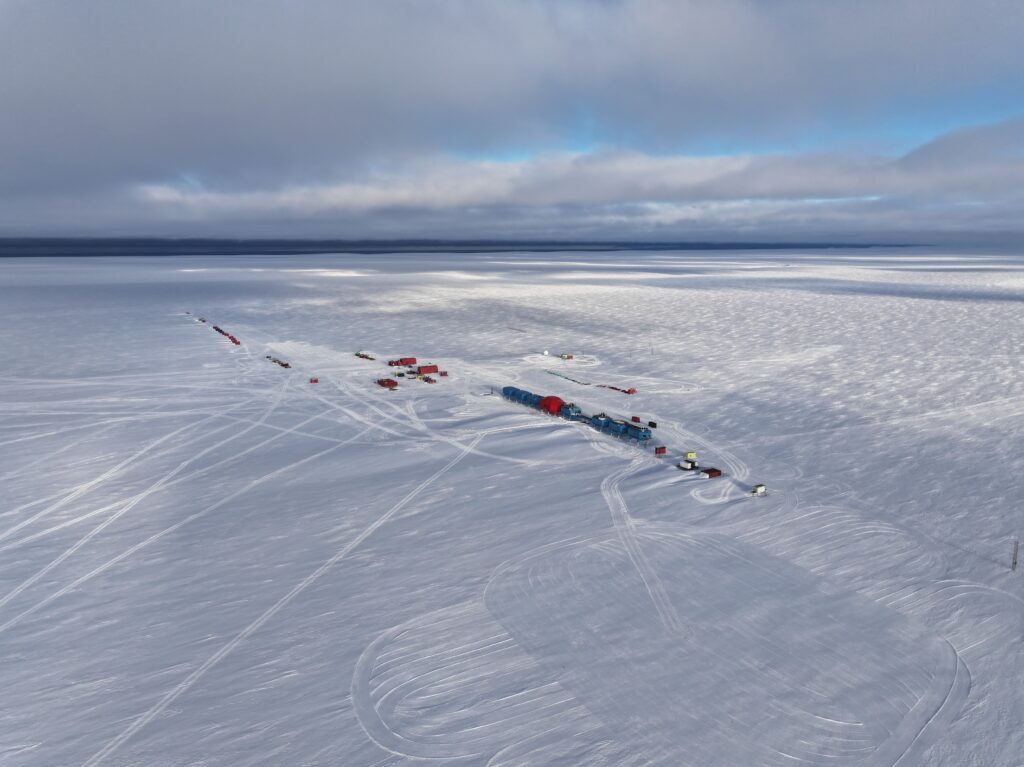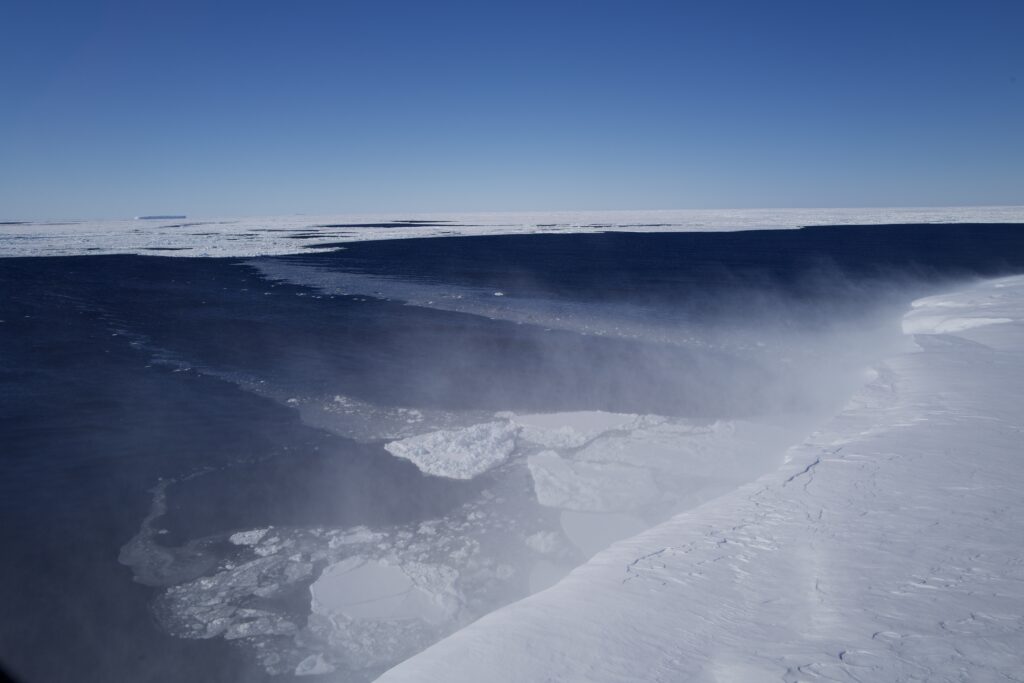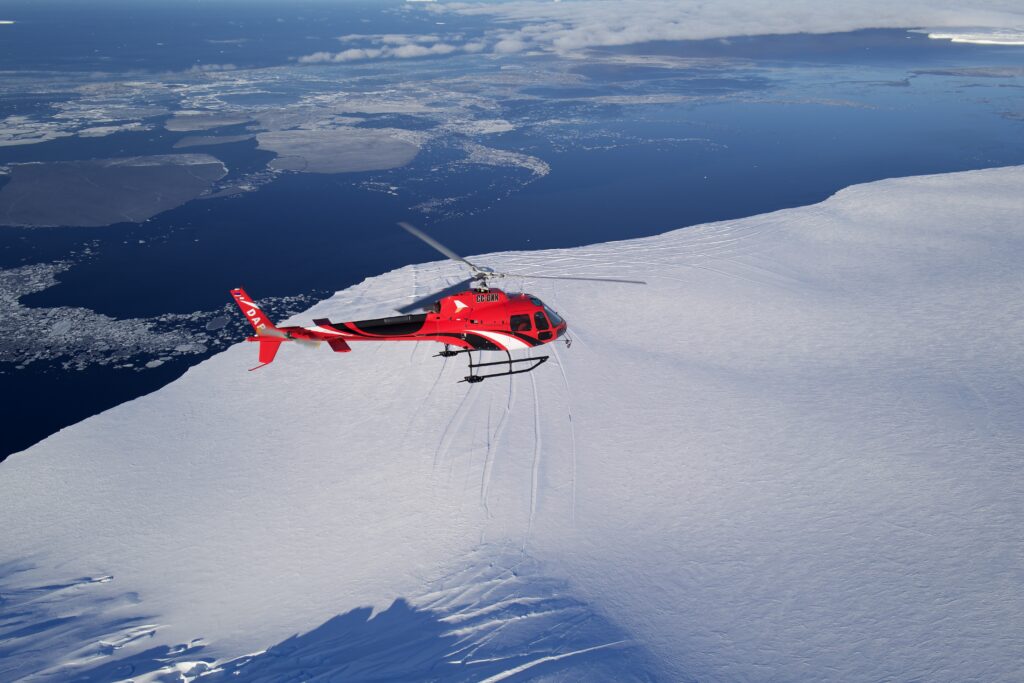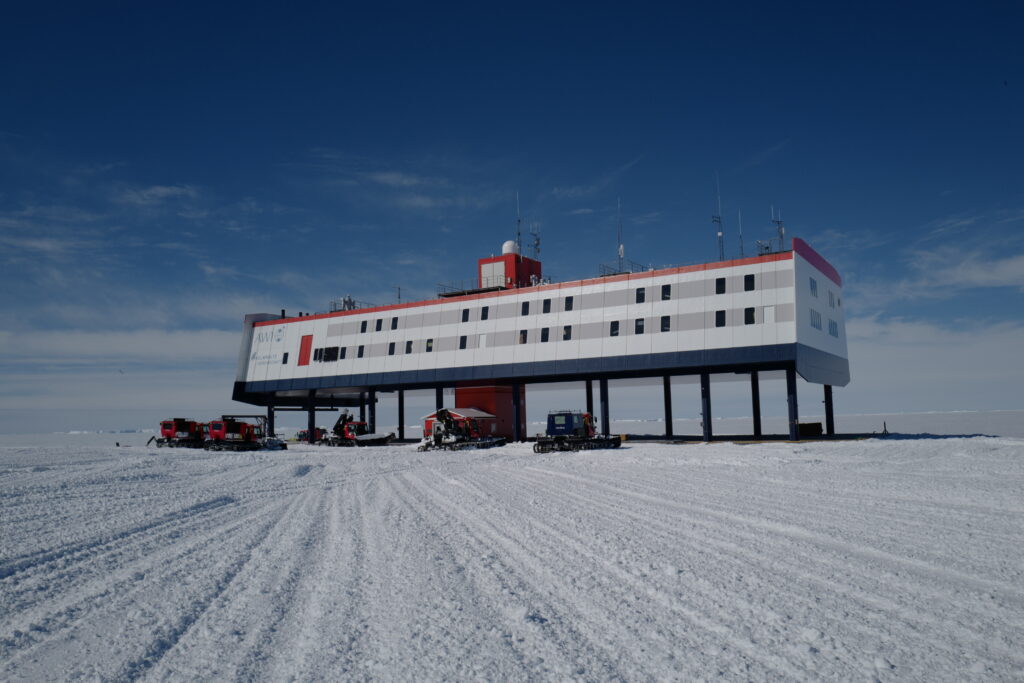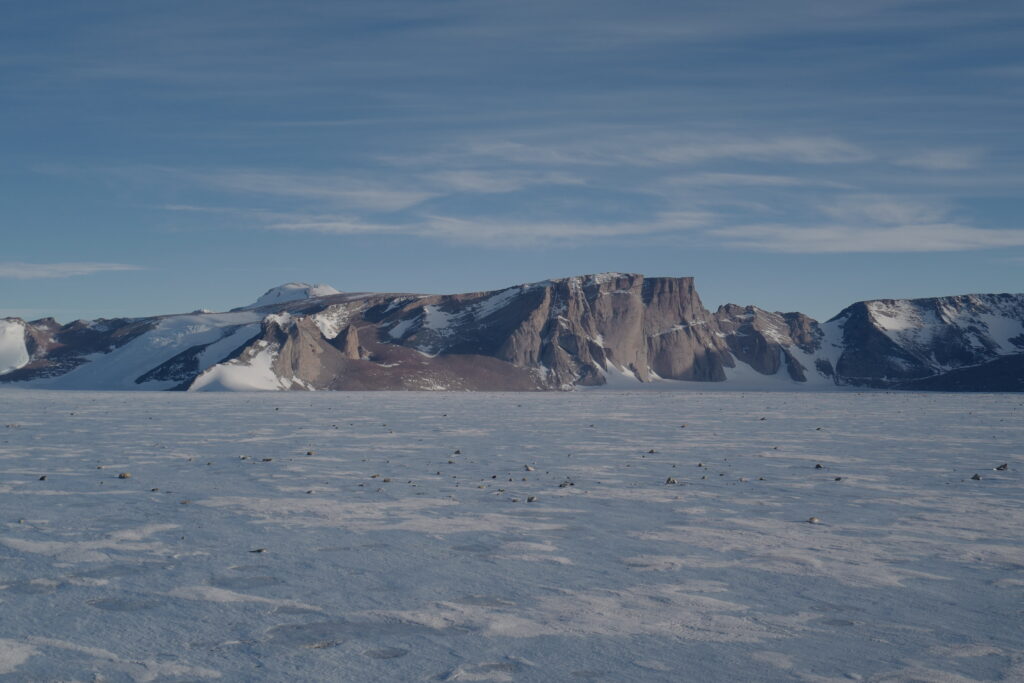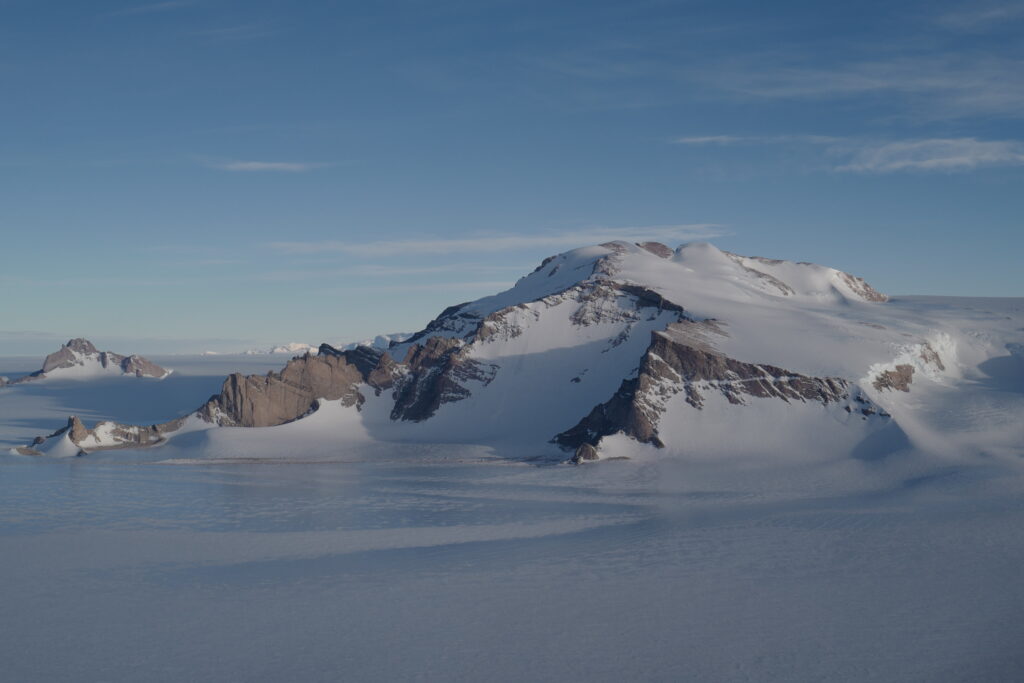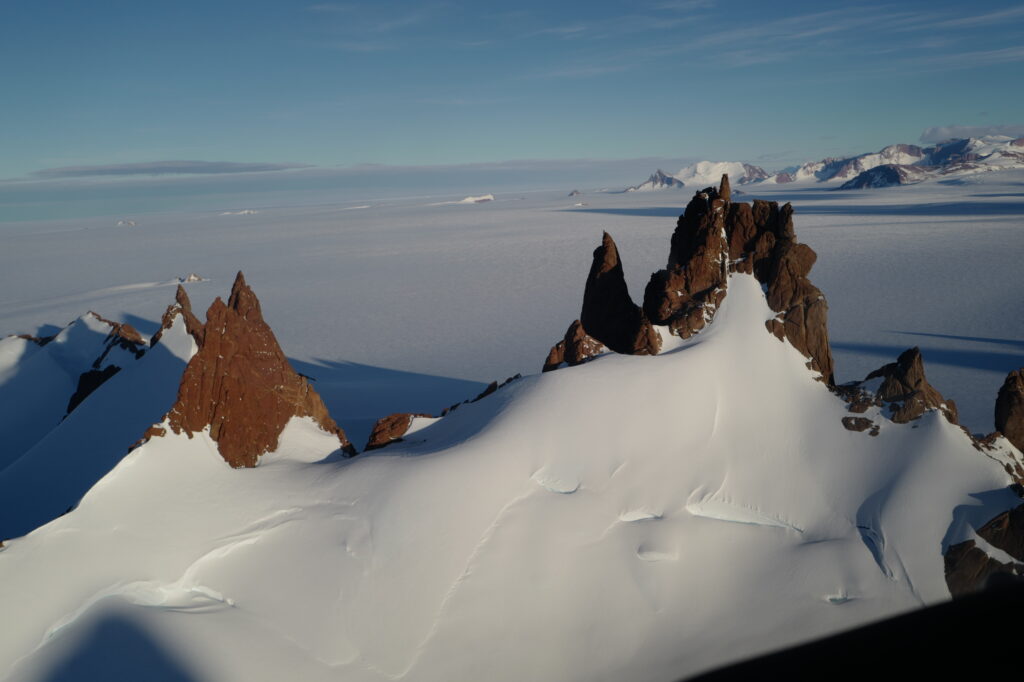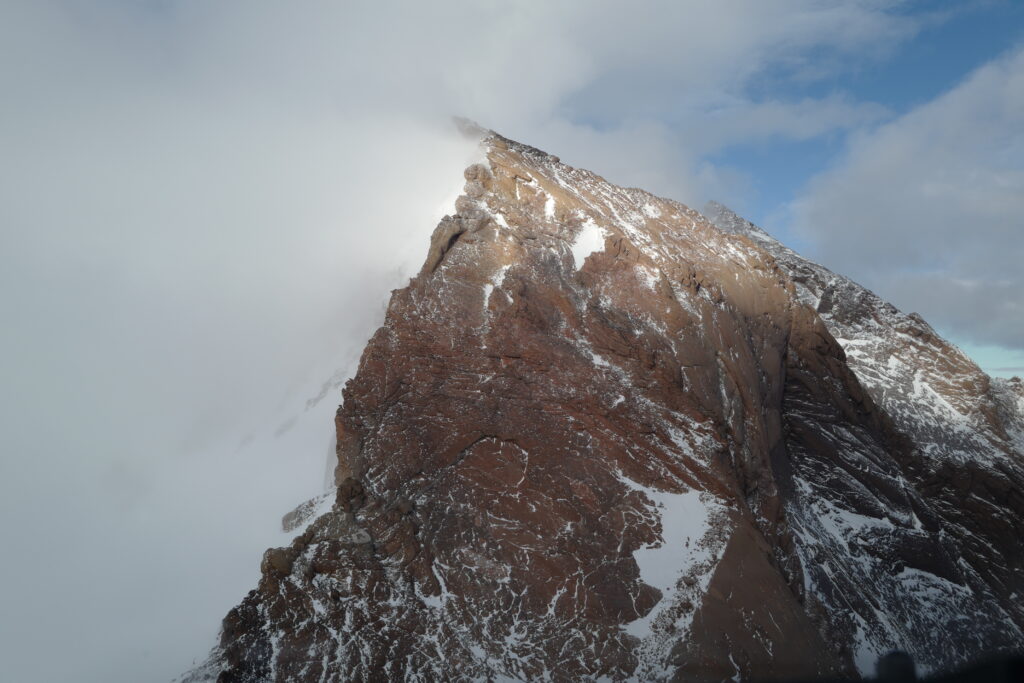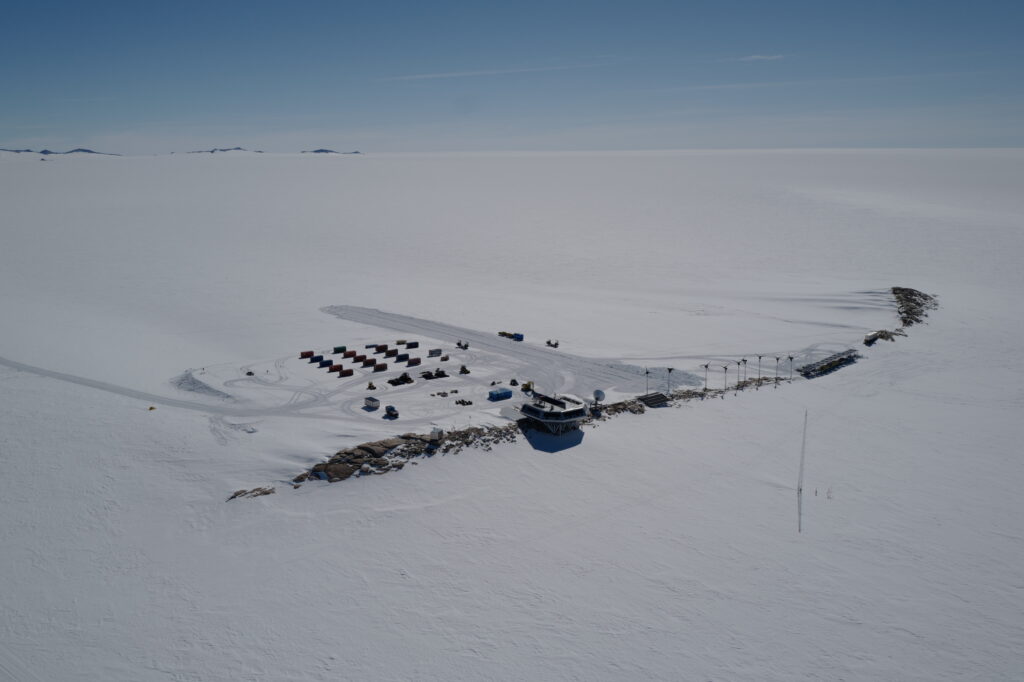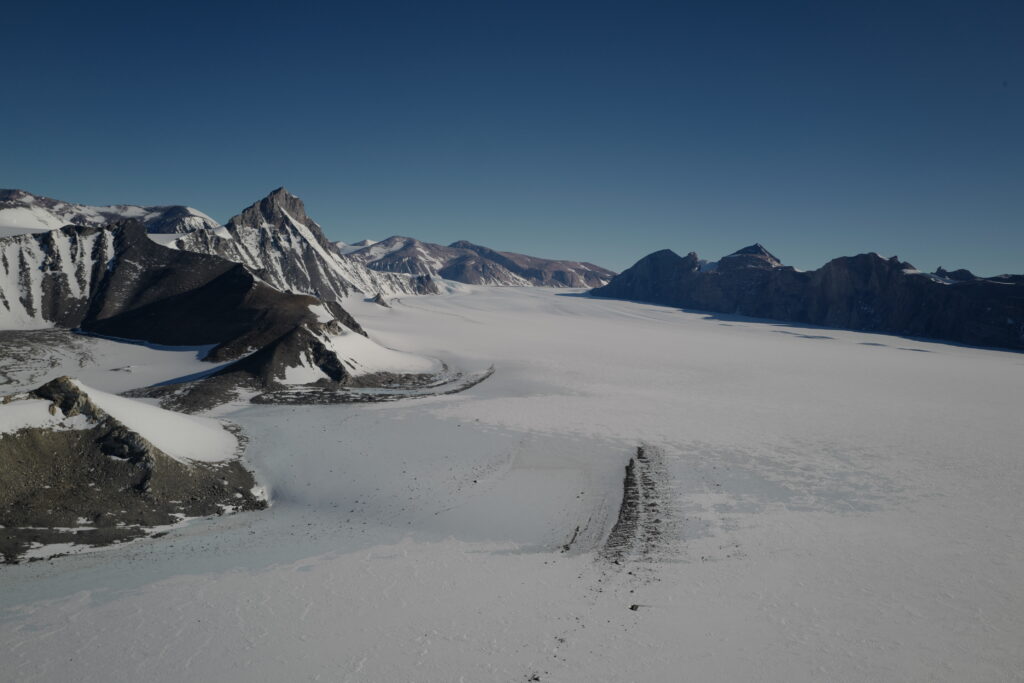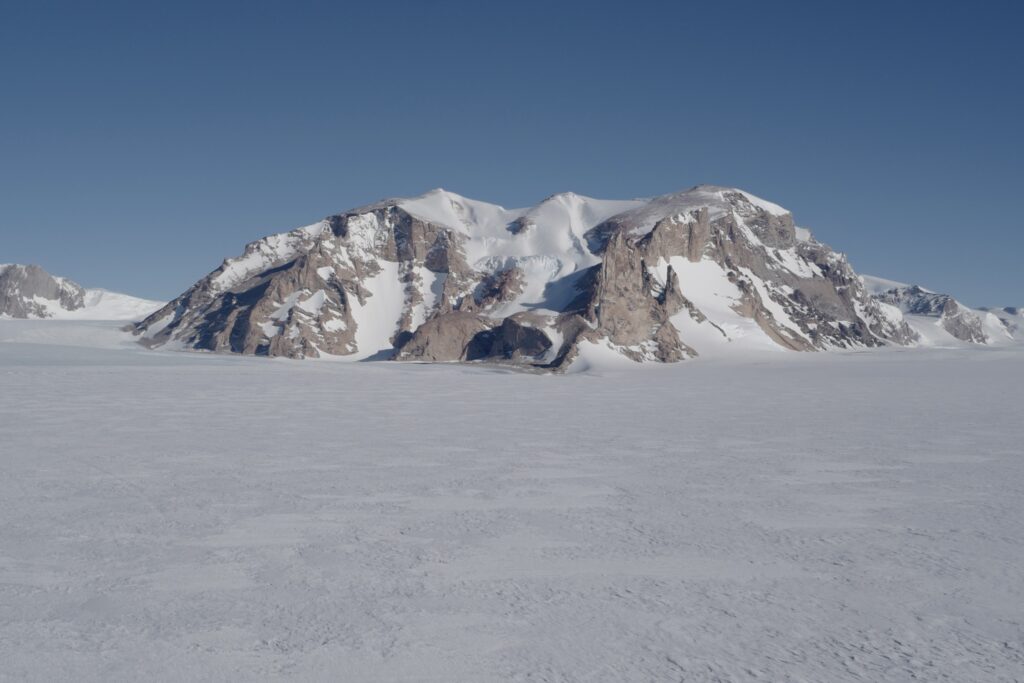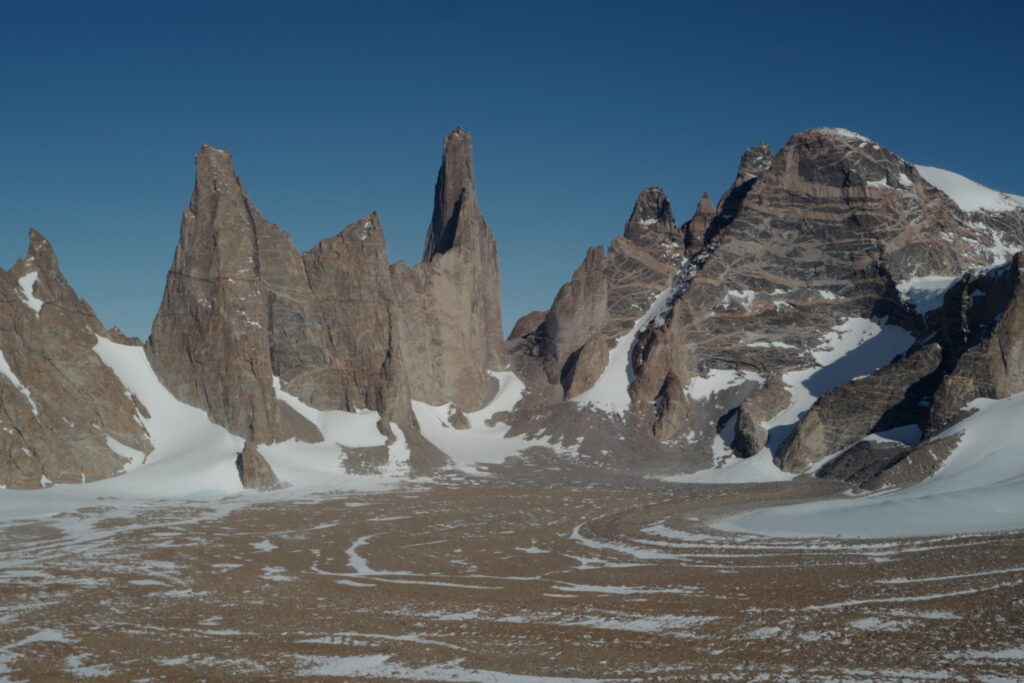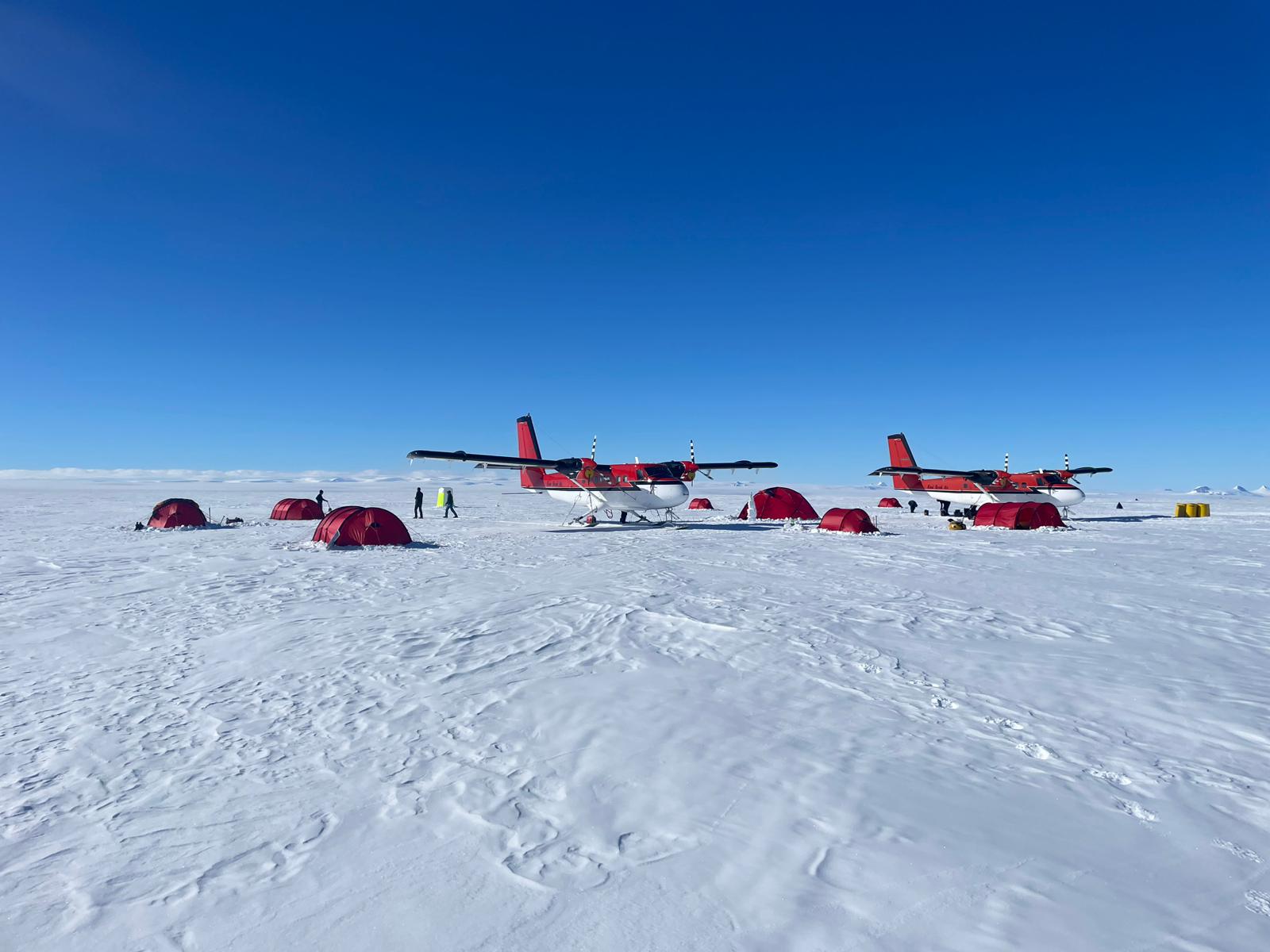The Beginning: Union Glacier to Gould Bay
Our Antarctic expedition began under sunny skies at Union Glacier, where preparation met opportunity. After comprehensive equipment testing and careful planning, we launched the SWIDA-RINGS Project—an ambitious scientific endeavor to conduct a clockwise circumnavigation of the Antarctic continent. The mission’s primary focus: studying ice sheets and conducting crucial scientific observations along Antarctica’s grounding line.
The initial days set the tone for our entire expedition. At Gould Bay, we were greeted by an unexpected welcoming committee—curious Emperor penguins who approached our aircraft with characteristic inquisitiveness. Their towering forms against our parked aircraft created a striking scene that perfectly captured the unique intersection of human scientific endeavor and Antarctic wildlife.
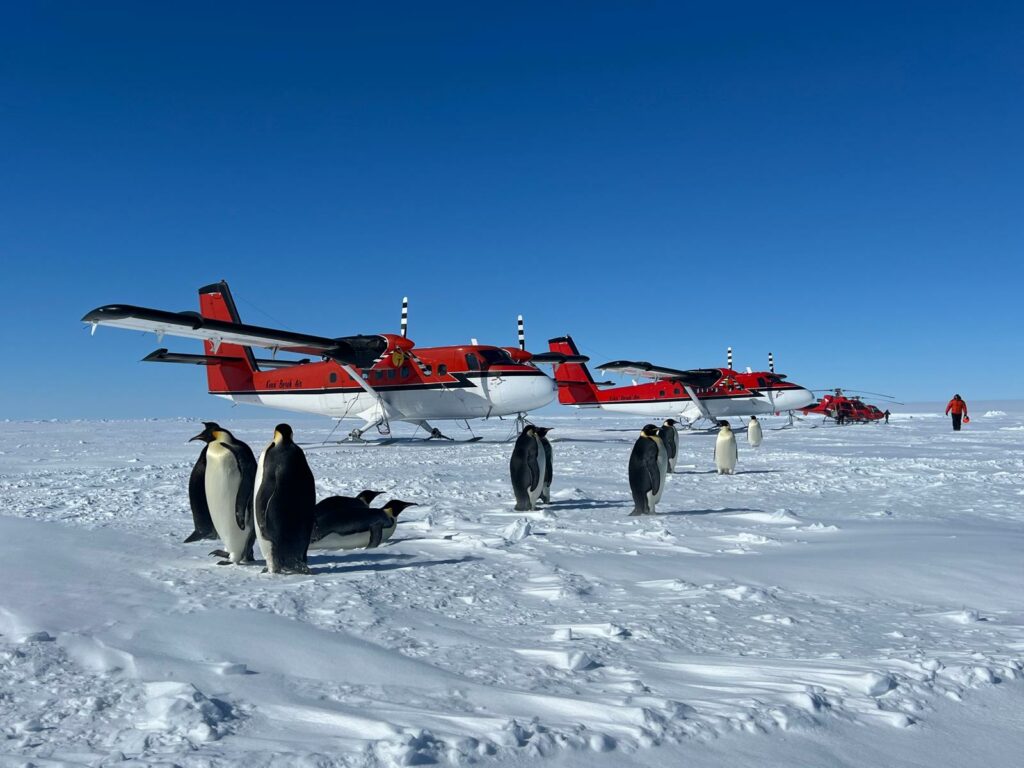
Early Progress: Navigating Through Scientific Stations
Our second day marked significant progress as we flew from Gould Bay to the Argentinian Belgrano Base.
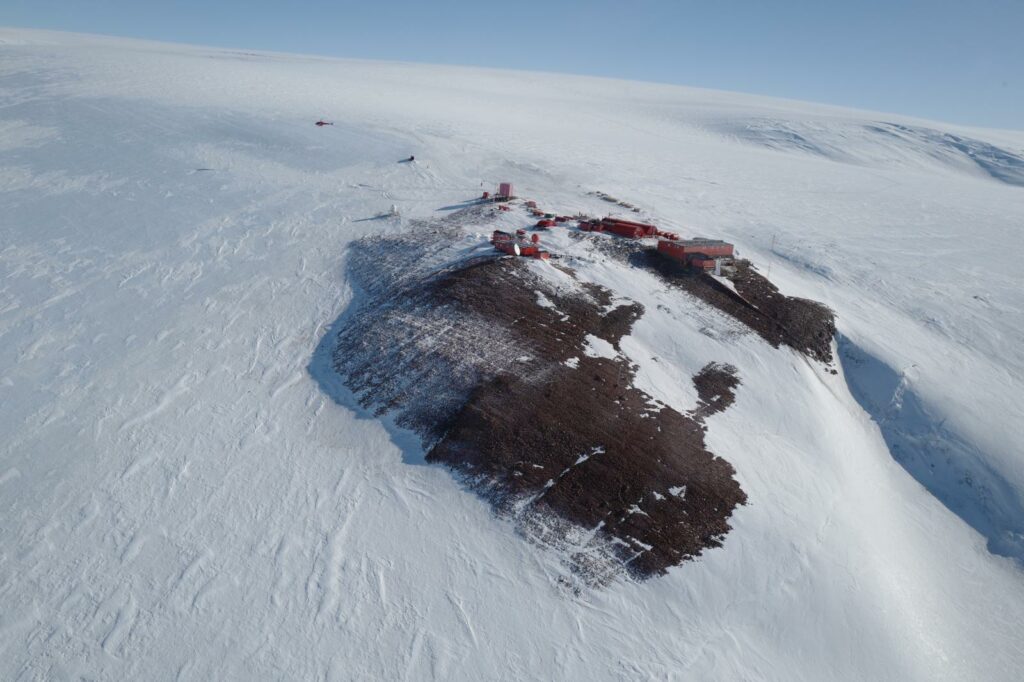
Flying at approximately 1,300 feet, we conducted our first successful scientific measurements using ice-penetrating airborne radar and snow radar to study the upper layers of the ice sheet. The specialized equipment aboard our DHB aircraft performed flawlessly, allowing us to gather valuable data about the continent’s ice structure.
The journey to Halley VI research station proved to be an exercise in patience and precision. After hours of monitoring weather reports and satellite imagery, we seized a narrow window of opportunity for our flight. The success of this leg was largely due to the extraordinary commitment of personnel at both Belgrano and Halley stations, who worked beyond their normal duty hours to support our mission.
Accelerating Progress: Eastern Antarctic Traverse
Our expedition gained considerable momentum as we pushed eastward. December 8th saw us executing a series of strategic movements, from Halley to Aboa station, and onward to Atka Bay—home to a famous penguin colony near Neumayer Base. This positioning proved crucial for our subsequent rapid advancement.
The following day, December 9th, marked one of our most ambitious segments yet. Our four aircraft covered more than 700 kilometers across eastern Antarctica, showcasing the expedition’s growing confidence and efficiency. The day’s success hinged on the exceptional support from multiple stations:
- Neumayer station quickly cleared their storm-battered runway and facilitated efficient refueling
- Troll station provided crucial logistical support, enabling us to maintain our momentum
- By day’s end, we reached Novo station, setting the stage for our next phase
This segment demonstrated the remarkable international collaboration that characterizes Antarctic research, with each station working efficiently to support our tight schedule and ambitious pace.
Challenging Conditions and Strategic Patience
The expedition reached Princess Elisabeth station, marking the end of one phase and the beginning of another. Day 15 brought new challenges and achievements as we waited for suitable conditions to move toward Mountain Evening station, managed by the Republic of Belarus.

The early hours of December 17th provided the window we needed. Our DHB aircraft successfully surveyed the grounding line, while the twin otter KBO aircraft established a crucial fuel cache to support helicopter operations. This strategic preparation enabled our successful afternoon flight to Mountain Evening station, where we received a warm welcome from the station’s personnel.
Scientific Achievement and Technological Implementation
Throughout our journey, we’ve maintained a consistent focus on our scientific objectives. The specialized equipment aboard our aircraft has collected valuable data about Antarctica’s ice sheets, particularly along the crucial grounding line where floating ice shelves meet the continent.

Our surveys have employed:
- Ice-penetrating airborne radar
- Snow radar for upper ice sheet layer analysis
- Various other scientific instruments crucial for understanding Antarctic ice dynamics
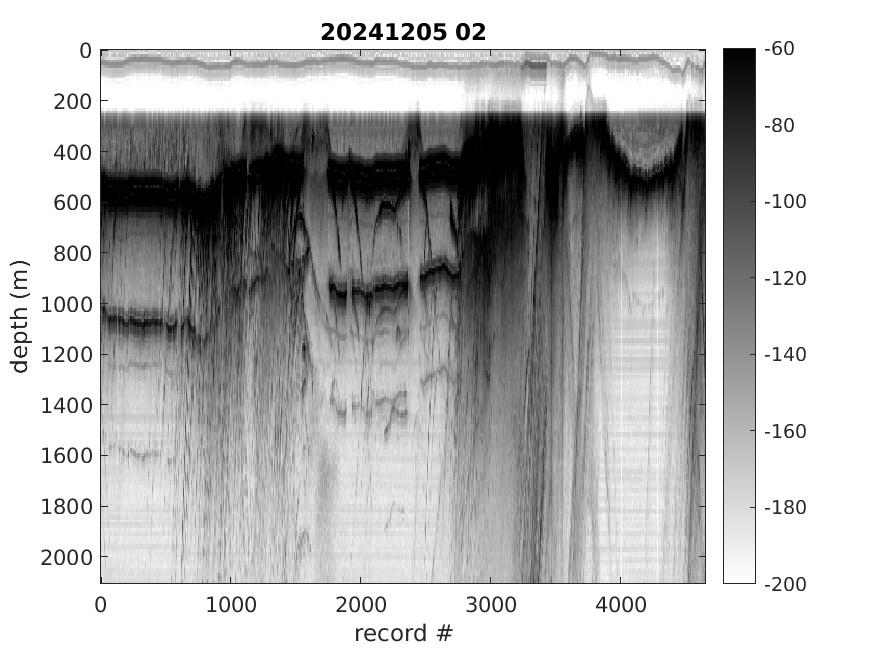
The Human Element
What makes this expedition truly remarkable is the international collaboration and support we’ve experienced at every stop. From the curious Emperor penguins at Gould Bay to the dedicated station personnel working extended hours to support our mission, each day has brought new examples of Antarctic cooperation and dedication.
The success of our journey thus far can be attributed to several key factors:
- Strategic planning and flexible execution
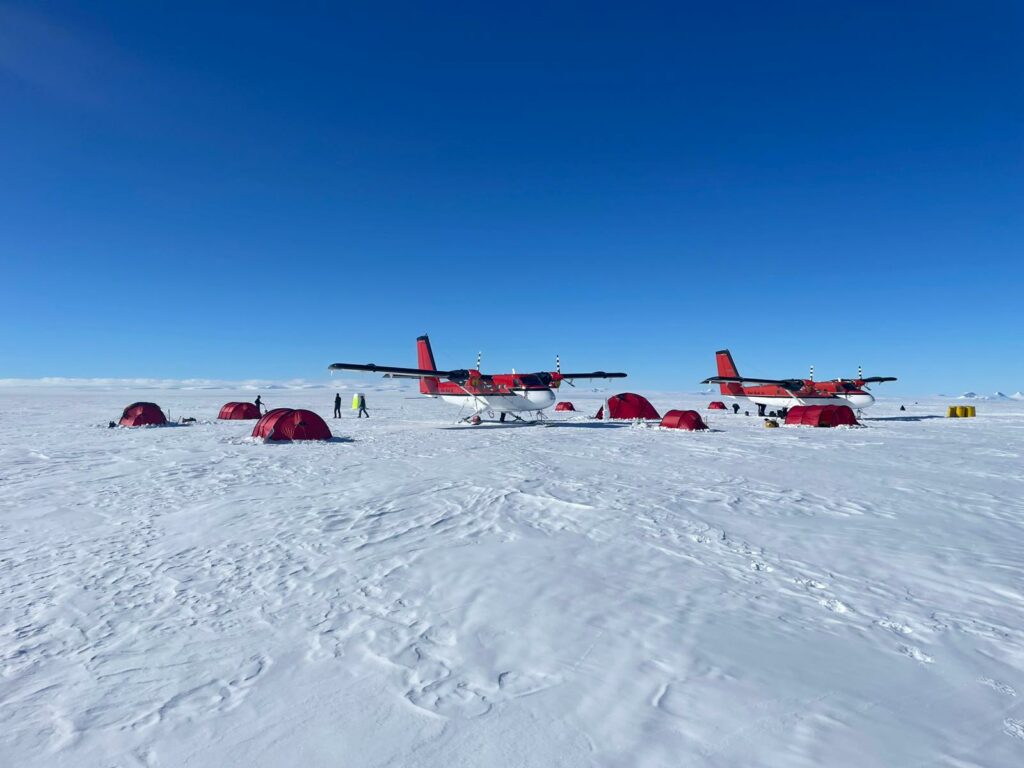
- International cooperation among various Antarctic research stations

- Dedicated support from station personnel
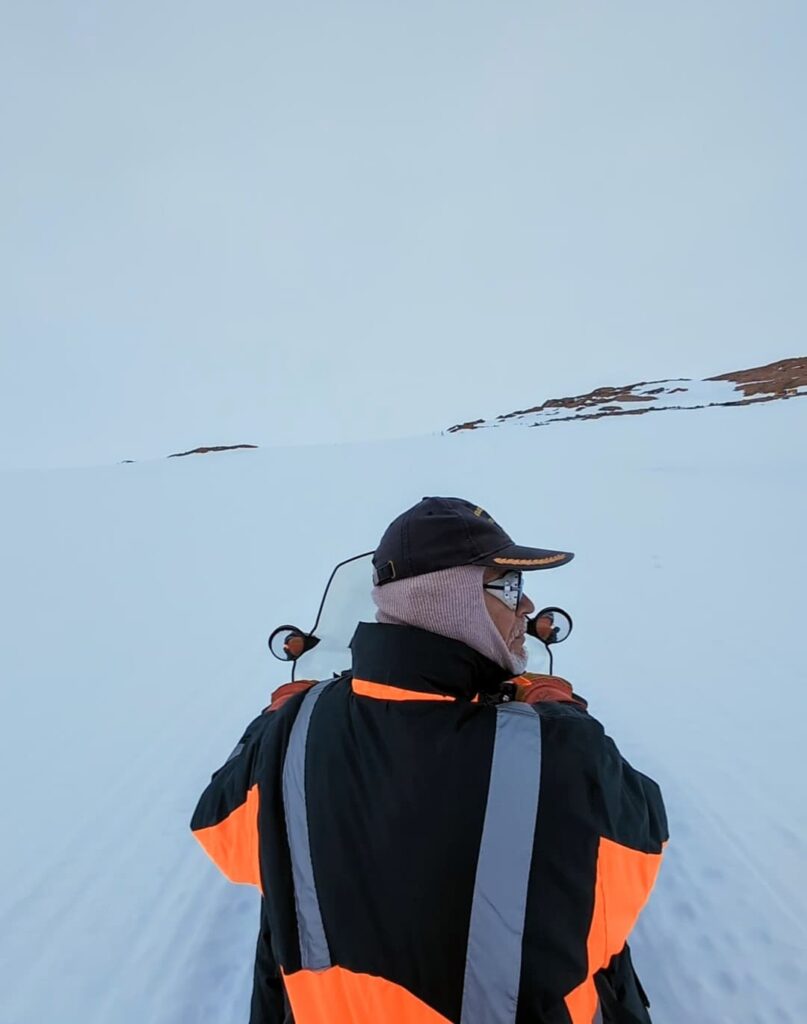
- Careful monitoring of weather conditions

- Efficient use of available weather windows

- Precise coordination among our four aircraft
The Path Ahead
As we continue our clockwise journey around Antarctica, each successful flight brings us closer to our comprehensive survey objectives. The data we’re collecting will contribute significantly to our understanding of Antarctic ice dynamics and their implications for global climate systems.
Our expedition demonstrates that in Antarctica, success is never solely about individual achievement—it’s about the collaborative spirit that enables scientific progress in one of Earth’s most challenging environments. From Union Glacier to Mountain Evening station, every leg of our journey has reinforced this truth while advancing our scientific mission.
Technical Achievements
The expedition has successfully coordinated the movements of multiple aircraft:
- DHB aircraft for scientific surveys
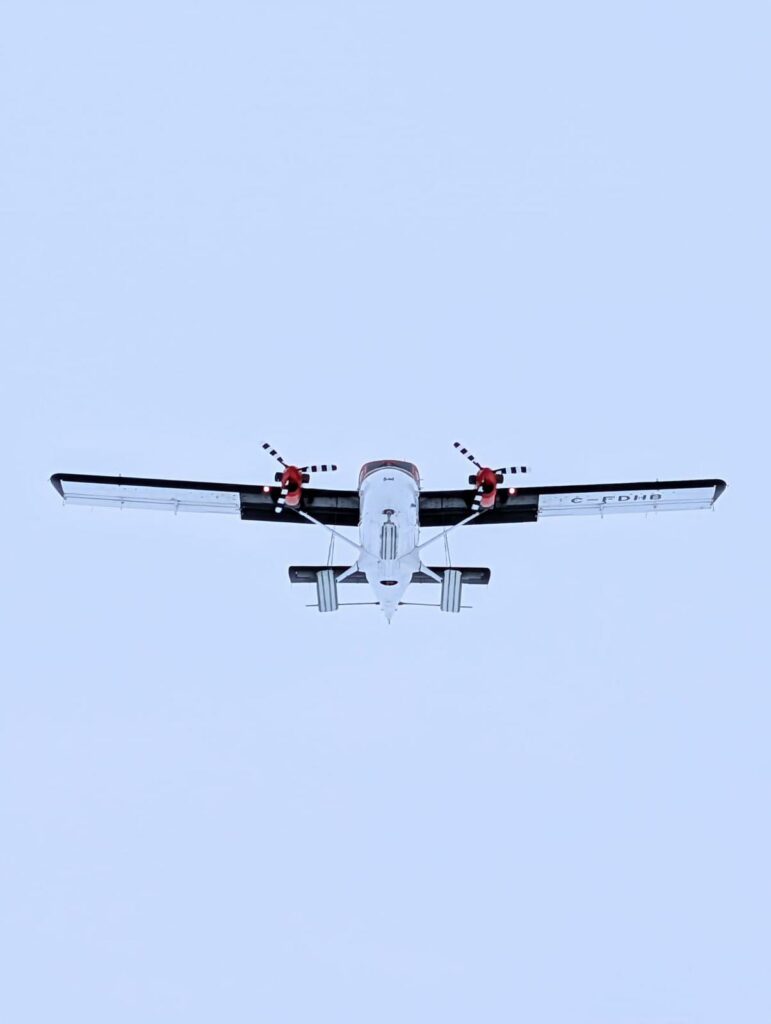
- Twin otter KBO for fuel cache establishment
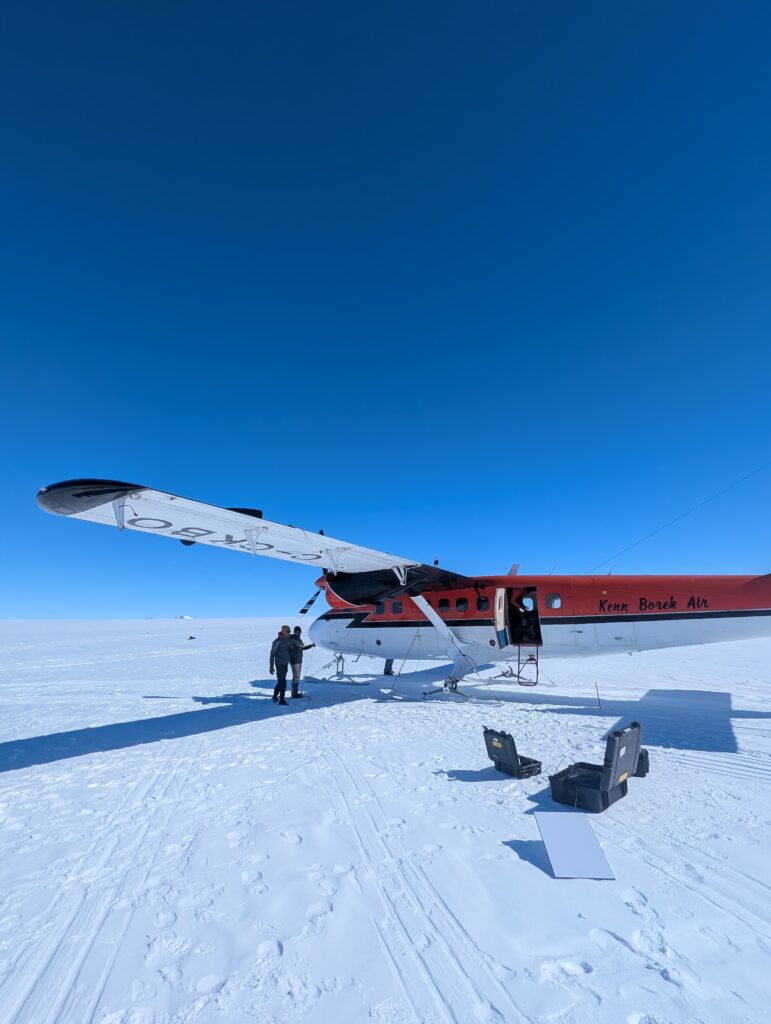
- Supporting helicopter operations

- Strategic refueling operations across multiple stations
This complex choreography of aircraft and personnel has enabled us to maintain our ambitious pace while ensuring safety and scientific rigor.
Looking Forward
As we prepare for the next phases of our expedition, we remain focused on our core objectives while maintaining the flexibility necessary for Antarctic operations. The support of the international Antarctic research community continues to be invaluable, demonstrating that even in Earth’s most remote continent, human collaboration knows no boundaries.
It’s currently day 18 of our expedition and our journey has been more than a series of flights between stations—it’s been a testament to what can be achieved when scientific ambition meets international cooperation. As we continue our circumnavigation of Antarctica, we carry with us not just our scientific instruments, but the goodwill and support of every station we’ve visited.

The SWIDA-RINGS expedition continues to push forward, gathering crucial data about Antarctica’s ice sheets while writing another chapter in the story of human scientific endeavor in Earth’s last frontier.
